Carl E. Olson's Blog, page 92
June 14, 2014
Catholicism and Authentic Fatherhood

Catholicism and Authentic Fatherhood | Deacon Harold Burke-Sivers | CWR
Clayton C. Barbeau’s The Father of the Family communicates a spirituality that truly embraces what it means to be a man of God
The Catholic contribution to male spirituality was relatively sparse until the 1990s when, sparked largely by the success of the Protestant Promise Keepers movement, interest in strengthening the faith of men and helping them to deepen their relationship with God—while increasing their knowledge of the Catholic faith through apologetics and catechesis—began to rise. Today, the resurgent Catholic men’s movement has yielded a steadily growing number of conferences, books, study programs, prayer groups and several male-oriented Catholic television series. Much of the Catholic literature has focused on fatherhood but recent works have broadened the spectrum, embracing a more holistic approach to male spirituality.
Clayton C. Barbeau’s excellent book, The Father of the Family: A Christian Perspective (Sophia Institute Press, 2013), an updated and expanded edition of his earlier work, The Head of the Family (Sophia Institute Press, 2002/The Liturgical Press, 1970), explores various aspects of Christian fatherhood with a wonderful blend of timeless spiritual wisdom and practical insight. Although written for fathers, Barbeau’s book provides rich fare for any man who hungers to go deeper in his faith. A family therapist by trade, Barbeau is careful not to psychoanalyze fathers, avoiding the mistake of Richard Rohr and others who have lost authentic male spirituality amidst the exploration of Jungian archetypes. The Father of the Family, by presenting a spirituality that truly embraces what it means to be a man of God, makes for an effective weapon of choice against the ever-encroaching culture of death.
Four aspects of Barbeau’s presentation on fatherhood stand out in this book: the power of God’s love in a father’s life; his use of Scripture; the direct, to-the-point style of writing; and the wonderful balance between the spiritual and practical dimensions of Christian fatherhood.
Like the hook of a popular song that you constantly hum, the love of God is a constant theme that flows seamlessly throughout the entire book.
Keeping Prayer in Summer: A Mother's Strategy

"Summertime" (1894) by Mary Cassatt (Wikiart.org)
By Donna-Marie Cooper O’Boyle | CWR blog
Summer doesn't automatically translate into bliss, but the traffic jams, whiny children, bug bites, sunburn, or unexpected delays and mishaps can be turned around and used for good
Just the thought of summer fast approaching might bring thoughts of rest and relaxation to mind. We may recall the lazy days of summer during our youth. Summer may also mean anticipated excitement and adventure—exploring new places or trying new things.
Some families plan escapes to beaches and paradise vacations, while others may stay home and plan day trips to fun spots, the local library, or parks and recreation centers. Anything out of the ordinary can be a very welcome change.
The realization that summer is just around the corner can cause Moms to feel a bit (or a lot!) nervous too. They might not want to let go of their semi-structured schedule for the more relaxed bedlam, craziness, and insane structure of summertime.
One thing we can count on—the schedule will usually change quite dramatically. But there's no need to fear. Let's take the stress out of summer right now by pausing to plan a strategy.
Summertime can certainly be a time of well-deserved rest and also a welcome change of scenery. While making plans for our families this summer, let’s not forget about prayer because a change in schedule once we hit summertime and an eagerness to “get away from it all” could cause us to lose touch with our spiritual needs. We don’t want to inadvertently let our prayer life go on vacation!
Recently, on a radio show I suggested that we should actually write down the intention to "pray."
June 13, 2014
Bill Maher, False Faith, and the Bible

Left: Bill Maher; right: Ralph Reed (photos: Wikipedia.org)
by Fr. Robert Barron | CWR blog
What Maher characterizes as “faith” is nothing but superstition or credulity or intellectual irresponsibility
I don’t know what possesses me to watch “Real Time With Bill Maher,” for Maher is, without a doubt, the most annoying anti-religionist on the scene today.
Though his show is purportedly about politics, it almost invariably includes some attack on religion, especially Christianity. Even during a recent interview with former President Jimmy Carter, whom Maher very much admires, the host managed to get in a sharp attack on Carter’s faith. Just last week, his program included a brief conversation with Ralph Reed, the articulate gentleman who used to run the Christian Coalition and who is now a lobbyist and activist on behalf of faith-related causes.
For the first three or four minutes, Reed and Maher discussed the social science concerning children raised in stable vs. unstable families, and Reed was scoring quite a few points in favor of the traditional understanding of marriage. Sensing that he was making little headway, Maher decided to pull the religion card, and from that point on things went from bad to worse. Maher said, “Now you’re a man of faith, which means someone who consciously suspends all critical thinking and accepts things on the basis of no evidence.” Astonishingly, Reed said, “yes,” at which point, I shouted at the TV screen: “No!” Then Maher said, “And I believe that you take everything in the Bible literally,” and Reed replied, “yes,” at which point I said, “Oh God, here we go again.”
Maher then did what I knew he would do: he pulled out a sheet of paper which included references to several of the more morally outrageous practices that the God of the Bible seems to approve of, including slavery. Pathetically, Reed tried to clear things up by distinguishing the chattel slavery of the American south from the slavery practiced in the classical world, which amounted to a kind of indentured servitude. “Oh I get it,” Maher responded, “God approves of the good kind of slavery.” The audience roared with laughter; Reed lowered his head; Maher smirked; and the cause of religion took still another step backward.
I would like, in very brief compass, to say something simple about each of the issues that Maher raised.
June 12, 2014
Church Attendance in the U.S.: Numbers and Challenges
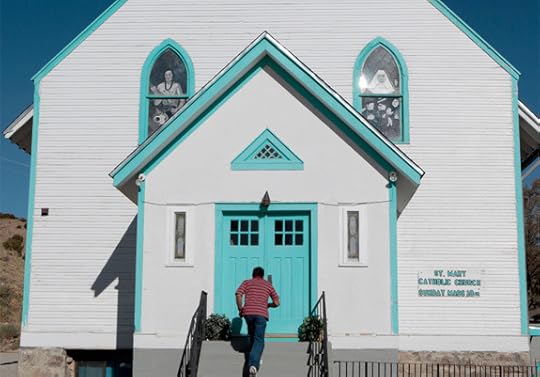
by Russell Shaw | CWR blog
Forty years ago, as the falloff in Sunday Mass attendance by American Catholics was becoming too obvious to ignore, Catholic voices began to be raised here and there saying it didn’t really matter. “You aren’t a good Catholic just because you go to church,” these people seemed to enjoy telling us. “What counts is what you do outside church.”
Two responses, which too seldom were offered at the time, were relevant to that. One was that evidence was lacking to show that most Catholics who skipped Mass had found other ways of expressing their presumed religious fervor. The other reply, arguably more to the point, was that the Second Vatican Council had only lately stressed the centrality of Sunday Eucharist in Catholic life, and staying away from Mass was hardly consistent with that.
And now, four decades later? A new study underlines the evident reality that the slippage in church attendance persists. It also offers the cold comfort of situating the decline in Mass attendance in the context of a decline in churchgoing by American Christians generally. The notable exceptions, it seems, are white evangelical Protestants, for whom the weekly attendance rate is around 60%. Hats off to them! For the rest, including Catholics, the numbers range from depressing to dismal.
The study, by a group called the Public Religion Research Institute, also compares what people say about their church attendance in live telephone interviews with what they say when they are answering questions in the impersonal medium of an online questionnaire. In brief, they are more likely to admit to not going to church in the latter situation than when actually speaking to somebody else.
Although the media made much of this finding, this particular disparity has always been recognized and often been reported, at least in general terms.
June 11, 2014
Ignatius Press is pleased to announce the arrival of video streaming!

Your requests have been heard.
Ignatius Press is pleased to announce the arrival of
video streaming!
Now, for the first time ever, watch your favorite Ignatius Press feature films and documentaries INSTANTLY.
For a list of all available titles, see below or visit our website and simply click on "Streaming Video"
and
for more information on how our streaming platform works, please read over our
Video Streaming Instructions.
Now Available for Streaming
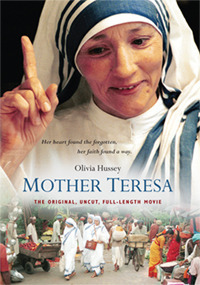
Mother Teresa
In an acclaimed film portrayal, Olivia Hussey illuminates the life story of Mother Teresa of Calcutta, the selfless missionary who brought hope, love and salvation to the poorest of the poor. The movie examines the fundamental moments of Mother Teresa's life from her childhood in Albania in the 1920s to her first calling as a nun, the decision to leave her order and live with the poorest of the poor, the vicissitudes of founding the Congregation of the Missionaries of Charity, and her great work of service in Calcutta and the rest of the world. Original full length version, 177 minutes. $3.95
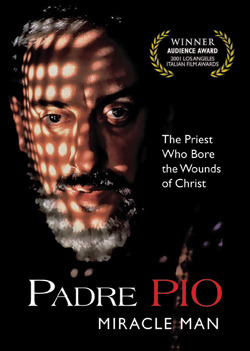
Padre Pio: Miracle Man
This movie captures the Capuchin friar's intense faith and devotion, and deep spiritual concern for others, as well as his great compassion for the sick and suffering. It reveals the amazing details and events in Padre Pio's life as a boy and throughout his 50 years as a friar, dramatizing the frequent attacks of the Devil on him, as well as the persecution he suffered at the hands of people, including those in the church.
Starring Italian actor Sergio Castellitto, and directed by Carlo Carlei, this is an outstanding feature film on the amazing life of this great saint. $3.95
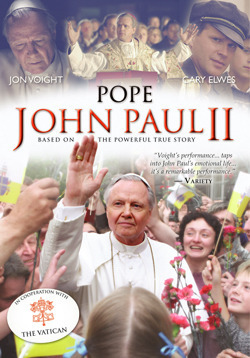
Pope John Paul II
This epic film follows Karol Wojtyla’s journey from his youth in Poland through his late days on the Chair of St. Peter. It explores his life behind the scenes: how he touched millions of people and changed the face of the Church and the world; how he defended the dignity of mankind. Jon Voight’s powerful, Emmy-nominated performance as John Paul II was widely praised, as was Cary Elwes as the young Karol. Shot on location in Rome and Poland in close connection with the Vatican, this is the definitive epic film on the life of Pope John Paul II. $3.95
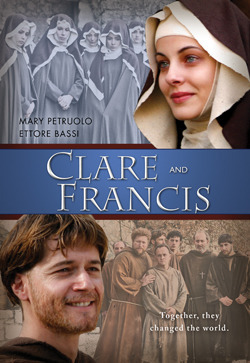
Clare and Francis
A major epic feature film on the lives of St. Clare and St. Francis of Assisi shot on location in Italy by the Italian film company Lux Vide, the producers of Saint Rita, Pope John Paul II and St. John Bosco. This outstanding movie is unique among films on St. Francis because of the historical accuracy of the story and its authentic spirit of joy and piety Francis was known for, as well as the major role played by Clare who is given equal stature with Francis. The two leads are played by very appealing performers, Mary Petruolo and Ettore Bassi, who give genuinely inspiring and beautifully moving performances of the daughter of a patrician family and the son of a rich merchant who leave all to follow Christ. $3.95
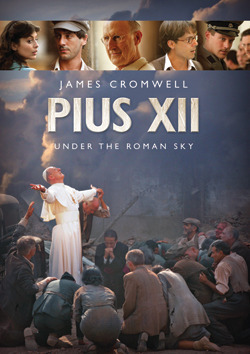
Pius XII: Under the Roman Sky
Based on Vatican documents and personal testimonies used by advocates for the cause for the canonization of Venerable Pope Pius XII, this epic film stars acclaimed actor James Cromwell in a powerful movie about the great, often hidden struggle waged by the Pope and many others with him to save the Jews from the Nazis during WWII. After the Nazi's take over Rome in 1943, Hitler's plan to kidnap the Pope is revealed as the Nazis make an all-out attempt to silence the one authority figure in Italy standing strong against them. Everything comes together with great intensity in this dramatic story that retraces history from the documents and the testimonies of witnesses that was not fully known til now. $3.95
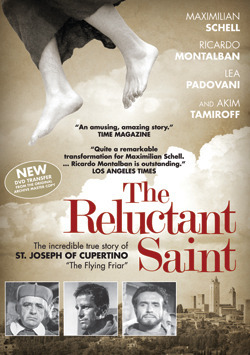
The Reluctant Saint
Maximilian Schell stars as "the flying friar", St. Joseph of Cupertino, in this heartwarming and amazing true story of the humble Franciscan friar who literally rose to sainthood. In the impoverished village of 17th century Cupertino, Italy, Joseph’s peasant mother convinces the reluctant Abbott (Ricardo Montalban) to accept her son into the monastery. With the support of the kindly local Bishop who sees in him a great deal more than others, and by a series of miraculous incidents, the simple but pious Joseph is ordained a priest. Yet some are convinced that it is the devil, not God, who is responsible for Joseph's miraculous powers – until a final miracle reveals to all his true sanctity. $3.95
To see a full list of the Ignatius Press films and documentaries that are available for streaming please click below.
View Full List

Share

Tweet

Forward


Copyright © 2014 Ignatius Press, All rights reserved.
Marriage and Social Justice

A woman carries a sign opposed to same-sex marriage while people in support of it walk behind her outside the Federal Court House in Detroit where plaintiffs April Deboer and her partner, Jayne Rowse, listened to closing arguments in their March 7, 2014, trial. (CNS photo/Rebecca Cook, Reuters)
Marriage and Social Justice | John Burger | CWR
“Rebuilding a marriage culture is an imperative of social justice,” says Bill May, founder and president of Catholics for the Common Good
If you knew that Catholics for the Common Good was based in California and you noticed on its website a box with the words “Same-Sex Marriage” crossed out in a red circle—and the words “The wrong issue” above that, you might think this was some kind of “Left Coast” initiative, heavy on Catholic “social justice” and light on life, marriage, and family issues.
You’d be right that they’re heavy on Catholic social doctrine. But they’re equally passionate about those other issues. In fact, according to CCG founder and president William B. May, they all tie in with one another.
The issue isn’t about whether same-sex couples should be allowed to marry, he says. “The issue is: do we need a civil institution that is specifically geared for uniting kids with their moms and dads?”
May looks at the breakdown of marriage in recent decades: the high rate of divorce, the increase in births to unwed mothers, etc. What has it yielded? An increase of children living in poverty, higher rates of juvenile delinquency among boys without a father, and other ills. “Rebuilding a marriage culture is an imperative of social justice,” May said. Every law, every curriculum, and every institution should be judged by how well it supports men and women marrying before having children.”
He finds support in his views in Catholic social teaching, in particular two documents: “Centesimus Annus talks about the right of a child to grow up in a united family. Donum vitae teaches that every child has a right to grow up within a family with their mom and dad united in marriage because it’s through that relationship that they can discover their own identity,” May said. “A mom and dad are who we are. We’re carrying their flesh for all of eternity. Who do I look like, my mom or my dad?
“Our faith calls us to be not against the oppressors but in solidarity with the victim,” he continued. “And who are the victims of the breakdown of marriage? It’s children who are deprived of a right to grow up in a family with their moms and dads united in marriage.”
May can't state it enough. You’ll hear him repeat it over and over, and you’ll read it throughout his book, Getting the Marriage Conversation Right: A Guide for Effective Dialogue (Emmaus Road, 2012): Marriage “creates the only civil institution that specifically unites kids with their moms and dads.”
“The goal must be promoting the recognition of an institution that unites children with their own moms and dads and promoting that, respecting the rights of the child, opposing the creation of children [through artificial reproductive technologies] with the intention of depriving them of the fundamental right of knowing their moms and dads,” he said.
He sees similarities between the pro-life movement and the movement to defend marriage.
June 10, 2014
An (Almost) Faultless Masterpiece
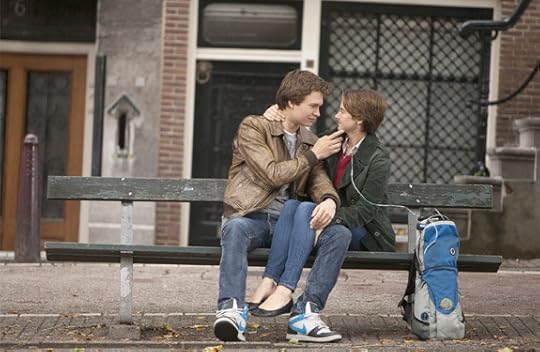
Ansel Elgort and Shailene Woodley star in a scene from the movie "The Fault in Our Stars." (CNS photo/Fox)
An (Almost) Faultless Masterpiece | Nick Olszyk | CWR
The Fault in Our Stars can be seen as a theodicy of sorts, a film about how to find love and meaning amid so much pain and suffering
MPAA Rating, PG-13
USCCB Rating, A-III
Reel Rating: 


 (4 Reels out of 5)
(4 Reels out of 5)
The Fault in Our Stars is a difficult, painful story about cancer-stricken teenagers; it is also one of the most beautiful films ever made about romantic love. It has the courage to approach the frequently trodden—yet nearly always disappointing—genre of “Young Adult” (YA) romance with surprisingly youthful vigor considering its deep subject matter (and without Mandy Moore or sparkling vampires). What a treat! It’s rare to see a film turn almost every expectation on its head in such thrilling fashion.
Put simply, this is a tale of true love, a love forged in the crucible of pain, suffering, and devotion. While it is lacking in addressing spiritual questions, it is profound in its approach to human relationships.
Hazel Lancaster (Shailene Woodley) is an average sixteen year-old girl who likes books and thinks her parents are embarrassing. But she also has cancer, which requires her to carry around extra oxygen wherever she goes. Her mother forces her to go to an unreasonably lame Christian cancer support group where she meets Gus Waters (Ansel Elgort), a likeable dreamboat whose recent and successful battle with cancer left him without one leg but in possession of a fresh, exciting perspective on life.
Hazel is obsessed with a serious, dark novel titled, An Imperial Affliction, written by a recluse Salinger-esque Dutch author, which is about a similar cancer patient and which ends, maddeningly, in mid-sentence.
June 9, 2014
An Iconic Screen Presence: An Interview with actress Olivia Hussey
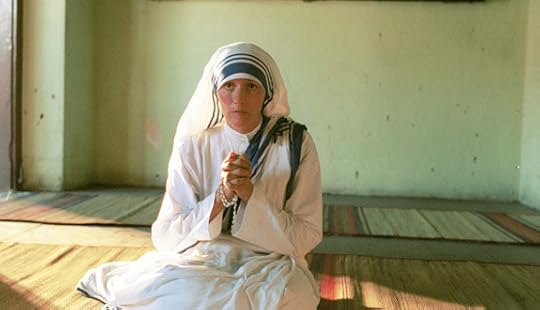
Olivia Hussy in "Mother Teresa"
An Iconic Screen Presence | Donna-Marie Cooper O'Boyle | CWR
Actress Olivia Hussey discusses starring in Mother Teresa : “I had always wanted to play her…She was one of the saints that I revered—absolutely!”
Actress Olivia Hussey was so sick during the filming of the movie Mother Teresa that she could have easily given up. During intense moments, she felt she lacked the strength and health to continue. But one day, out of sheer necessity, she sat down in her chair on the set, closed her eyes, and asked God and Mother Teresa to help her. Unexpectedly, a profound peace instantly came over her. And when a “bright light” came into her head as she finished voicing the prayer, she felt an unfathomable calm envelop her which thoroughly convinced her that she would be able to get through each intense day of filming on location in Sri Lanka and Italy.
Ms. Hussey was born in Buenos Aires City, Argentina on April 17, 1951. She began drama school in England at age seven and delighted in the creative acting education for the next five years. Soon after, Ms. Hussey landed a role, portraying Jenny in a stage production of The Prime of Miss Jean Brodie. As it happened, Italian director and producer Franco Zeffirelli—who had auditioned over 500 young actresses for the role of Juliet in his film of William Shakespeare’s Romeo and Juliet (1968)—was in the audience watching.
Zeffirelli subsequently awarded Ms. Hussey the part of Juliet. Just 15 during shooting, Ms. Hussey played the celebrated role to great acclaim. Her acting won a Golden Globe and two successive Best Actor Donatello Awards (Italy’s Oscar equivalent). Interestingly, since Ms. Hussey was under 18 years of age, she was not legally allowed to attend the London premiere of Romeo and Juliet since the film contained nudity—even though she was the one who was nude in the film.
Ms. Hussey has appeared in over two dozen films and guest-starred in numerous television series. Continuing in an acting career throughout her life, she has portrayed some notably “holy” roles: the Virgin Mary in Franco Zeffirelli’s Jesus of Nazareth; Therese, the faithful wife and mother in the screen adaptation of The Jeweler’s Shop, Karol Wojtyla’s (now St. John Paul II) play; and most recently, as Mother Teresa.
Ms. Hussey renders an inspiring and compelling portrayal of Blessed Mother Teresa of Calcutta, the determined and compassionate saint of the gutters. Portraying Mother Teresa was a long-awaited dream role for Ms. Hussey, and she was delighted when an Italian film company invited her to take the part.
“I had always wanted to play her … She was one of the saints that I revered—absolutely! This little lady, just through her sheer faith and will stepped out into the streets of Calcutta and founded an order of nuns and helped the poorest of the poor. I mean, I get goose bumps thinking about it!”
Ms. Hussey recently took time from her busy schedule to speak with The Catholic World Report about her roles as Mother Teresa and Therese. Incidentally, Pope John Paul II called The Jeweler’s Shop film “the best possible film based on my play.” And, according to Ms. Hussey, sisters of the Missionaries of Charity told Ms. Hussey, “We felt as if we were watching Mother. It’s as though Mother came through you!”
Catholic World Report: I observed on your website that you completed “your life’s dream” in portraying Mother Teresa. Would you kindly explain?
Olivia Hussey: I was shooting Jesus of Nazareth with Franco Zeffirelli. After it was over, we did a lot of interviews and publicity, and some publicity people started saying, “What do you do after playing the Virgin Mary? [She chuckles.] You’ve played Juliet, and now you’ve played the Virgin Mary. What role could you possibly want to play?”
Without hesitation I said, “Mother Teresa of Calcutta!”
CWR: Wow. You said that before—
Hussey: Yes, I did! This was a long, long time ago. I was 27 years old. So, interviews and things over the years—people would ask, “If you could play anything what would you like to play?” And I said, “Mother Teresa of Calcutta!”
CWR: That’s great! What happened next?
Contraception, Rights, and Total State Control
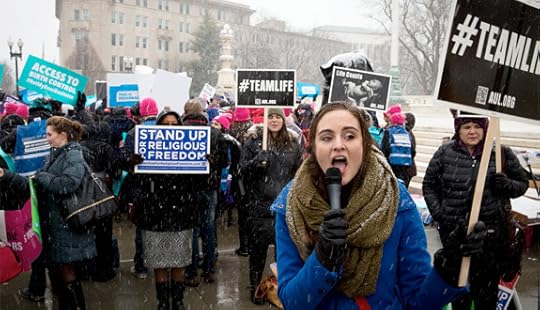
A woman leads a chant in front of the U.S. Supreme Court in Washington against the federal government's contraceptive mandate March 25. (CNS photo/Tyler Orsburn)
Contraception, Rights, and Total State Control | Fr. James V. Schall, S.J. | Catholic World Report
Charles E. Rice's new book argues that once absolute relativism is established as the state “religion” there is no limit to what the state can and will do
“There are many paths to total state control of life—fascism, totalitarianism, communism. In the United States the path is labeled protection of individual human rights.”
— Charles E. Rice, Contraception & Persecution (2014), 86.
I.
Contraception & Persecution is a brief, blunt analysis of our polity. It presents a clear line of thought to explain, to those who will listen, the totalitarian nature of our present regime. This regime no longer follows the basic moral and philosophic premises of its founding. Nor does it acknowledge the basic human good by which any regime is limited. Indeed, Rice argues that the American founding itself, for all its genius, was flawed. It recognized no authentic interpreter of the natural law that was presupposed from Christian and classic sources by those who established this republic.
Eventually, this lack of an authoritative interpreter meant that the state itself would become the sole arbitrator of what was the human good. The state itself came to be the highest law. It would recognize no other authority but itself; no one could appeal to a higher law. As a people we are reluctant to admit that things could go so wrong. We are comfortable and hate to think things have so radically deviated from any true human good. The result is that we do not take seriously the intellectual nature of our obvious decline into an increasingly anti-human state.
Through the interpretation of the courts, the lack of understanding or resistance by Congress, and the multiplicity of arbitrary decrees now stemming from the Executive, this founding flaw has solidified itself as the ruling doctrine of the public order—“whatever the prince wills is the law”—to cite the classic Roman Law dictum designating the state with no limits.
Basically, we have established absolute relativism as the state “religion.”
Of its very nature, this state brooks no opposition.
June 8, 2014
Pentecost Sunday: Unafraid of the Flame that Does Not Burn
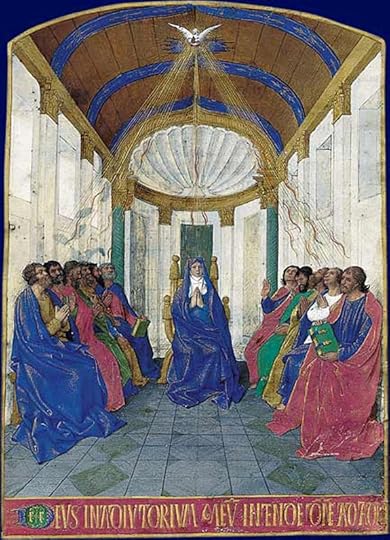
"Pentecost" by Jean Fouquet (1420–1481)
A Scriptural Reflection on the Readings for June 8, 2014 | Pentecost Sunday | Carl E. Olson
Readings:
• Acts 2:1-11
• Psa 104:1, 24, 29-30, 31, 34
• 1 Cor 12:3b-7, 12-13
• Jn 20:19-23
“Spirit and fire are united—a true miracle, air and fire are joined together—awesome sight!”
So wrote the sixth-century Church father, St. Romanus the Melodist, in a kontakion, or hymn, celebrating the solemnity of Pentecost. In another verse, he wrote, “Do you, then, dearly beloved, stand and simply observe the fire, which the One who is in heaven has sent from on high.” And, “Then brothers, let the One descended upon us cast out fear from our minds.”
His beautiful hymn emphasizes three essential truths about the Holy Spirit, each of which is revealed in today’s readings. First, the Holy Spirit is a heavenly gift from the Father and Son; secondly, he transforms and empowers those who receive him; thirdly, he unites the people of God—the Church—in an inimitable, supernatural way.
Let’s begin with John’s account of the apostles in the upper room, which describes a frightened group of men behind locked doors. Despondent and shattered, they were like lifeless clay or dry bones. But when Jesus entered, they rejoiced, and when he breathed upon them, they came alive with the gift of the Holy Spirit (cf. Gen 2:7; Ezek 37:5). This shows how closely united are the death-destroying resurrection of Christ and the life-creating gift of the Holy Spirit.
Seven weeks later, the disciples were once again in the upper room, but filled with expectancy, not dread. Again, the presence of God came suddenly, this time with a noise like a strong wind and what appeared to be “tongues of fire”. God had once led the people of Israel out of Egypt under the appearance of a cloud by day and a pillar of fire by night. On Pentecost, his presence was represented by wind and fire, and so began the pilgrimage of the newly revealed people of God, the Church. “By his coming, which never ceases, the Holy Spirit causes the world to enter into the ‘last days,’ the time of the Church, the Kingdom already inherited though not yet consummated” (par. 732).
This brings us to the second point, for in the Church, as St. Paul told the Corinthians, the “manifestation of the Spirit is given for some benefit.” The Holy Spirit is manifest—that is, he acts and empowers—through the sacrament of baptism, by which man is filled with divine life and united to the mystical body of Christ. This transformation was dramatically evident in the upper room on Pentecost, for the Spirit-filled disciples, having been touched by tongues of fire, were able to “speak in different tongues” and “to proclaim”. And what was proclaimed that day? The gospel of Jesus Christ, which culminated in Peter’s exhortation to the people to repent and be baptized, so “you will receive the gift of the holy Spirit” (Acts 2:38).
That call to repentance was also a call to unity. At Babel, men desired to established unity and dominion through human power and ingenuity—a timeless temptation—by building a great city and tower (Gen 11:1-10). At Pentecost, God established unity and peace through the Holy Spirit, revealing to the world himself and his household, “the church of the living God, the pillar and foundation of truth” (1 Tim 3:15). The Catechism states of Pentecost: “On that day, the Holy Trinity is fully revealed” (par 732).
God is one but also Triune—one God in three persons: Father, Son, and Holy Spirit. He is perfect unity, but also perfect relationship and communion (cf. CCC, 253-6). The unity and catholicity of the Church is rooted in this great mystery of the Trinity. And from it, St. Paul wrote, flows a real and authentic diversity of gifts, service, and workings, for “we were all given to drink of one Spirit.”
St. Romanus, at the conclusion of his hymn, asked, “Why, then should we be afraid of a flame that does not burn?” This solemnity is a call to repentance and unity, as well as to joy and peace, each given by the All-Holy Spirit.
(This "Opening the Word" column originally appeared in the June 12, 2011, edition of Our Sunday Visitor newspaper.)
Carl E. Olson's Blog
- Carl E. Olson's profile
- 20 followers



